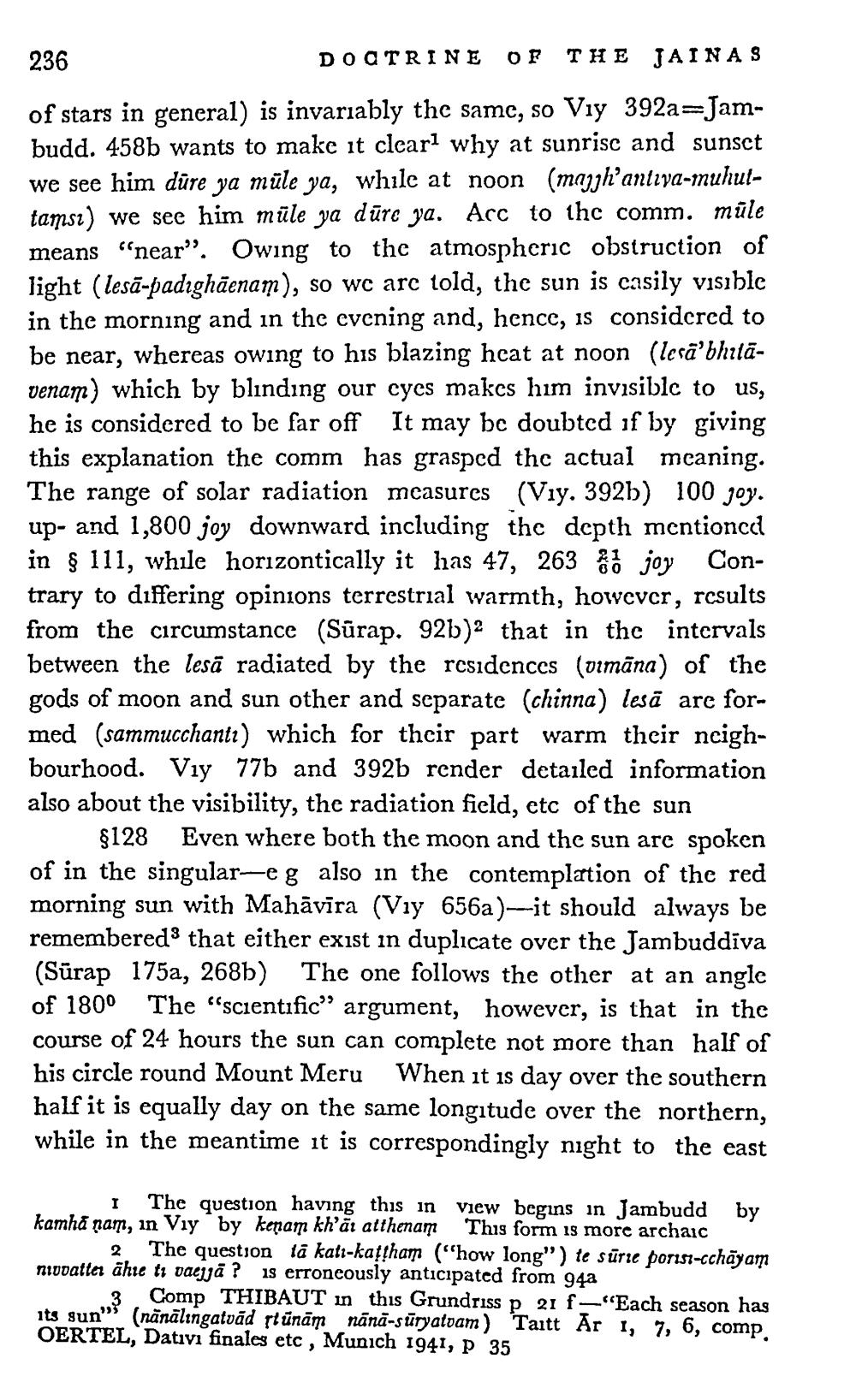________________
236
DOCTRINE OF
THE JAINAS
of stars in general) is invariably the same, so Viy 392a-Jambudd. 458b wants to make it clear1 why at sunrise and sunset we see him dure ya müle ya, while at noon (majjh'antiva-muhuttams) we see him mule ya dure ya. Acc to the comm. mule means "near". Owing to the atmospheric obstruction of light (lesa-padighāenam), so we are told, the sun is casily visible in the morning and in the evening and, hence, is considered to be near, whereas owing to his blazing heat at noon (lesa' bhitāvenam) which by blinding our eyes makes him invisible to us, he is considered to be far off It may be doubted if by giving this explanation the comm has grasped the actual meaning. The range of solar radiation measures (Viy. 392b) 100 joy. up- and 1,800 joy downward including the depth mentioned in § 111, while horizontically it has 47, 263 joy Contrary to differing opinions terrestrial warmth, however, results from the circumstance (Surap. 92b)2 that in the intervals between the lesã radiated by the residences (vimana) of the gods of moon and sun other and separate (chinna) lesã are formed (sammucchant) which for their part warm their neighbourhood. V1y 77b and 392b render detailed information also about the visibility, the radiation field, etc of the sun
§128 Even where both the moon and the sun are spoken of in the singular-e g also in the contemplation of the red morning sun with Mahāvīra (Viy 656a)-it should always be remembered that either exist in duplicate over the Jambuddiva (Surap 175a, 268b) The one follows the other at an angle of 180° The "scientific" argument, however, is that in the course of 24 hours the sun can complete not more than half of his circle round Mount Meru When it is day over the southern half it is equally day on the same longitude over the northern, while in the meantime it is correspondingly night to the east
I
The question having this in
view begins in Jambudd by kamhā ņam, in Viy by kenam kh'ai atthenam This form is more archaic 2 The question ta kati-kaṭṭham ("how long") te surie porisi-cchayam nivvatter ähe ti vajjā? is erroneously anticipated from 94a
Jun"? in this 21 f "Each season has its sun' (nänālingatvad rtūnām nānā-suryatvam) Taitt Ar 1, 7, 6, comp OERTEL, Datıvı finales etc, Munich 1941, p 35




